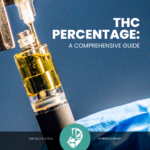As synthetic cannabinoids like THCm are developed and studied, questions about their safety naturally arise. While early research has shown some promising findings about THCm’s potential medical benefits, it is essential to evaluate this novel compound’s short-term and long-term safety carefully.
To date, there have been a limited number of studies evaluating the safety of THCm specifically. However, the available evidence suggests that THC may have some adverse effects that must be carefully weighed against its potential benefits. For example, a 2020 study published in the journal Regulatory Toxicology and Pharmacology found that THCm could cause significant changes in various markers of liver function in rats at high doses. While it is important to note that these findings have not yet been replicated in humans, they suggest that THC may have some adverse effects on liver health.

In addition to its effects on liver function, there is also concern that THC may have psychoactive effects that could make it more prone to abuse and dependence. While THCm does not appear to activate the same receptors in the brain as THC, researchers still do not fully understand the nature of the receptor that THCm binds to. As such, it is possible that prolonged use of THCm could result in addiction, tolerance, or withdrawal symptoms.
It is also worth noting that because THCm is a synthetic compound, unforeseen risks may be associated with its use that is not yet fully understood. For example, there is concern that THCm could be more potent and longer-lasting than other cannabinoids, making it more prone to adverse effects like anxiety, paranoia, or cognitive impairment. Additionally, since THCm is not a natural compound, it may be more difficult for the body to metabolize and eliminate, leading to accumulation and potential toxicity over time.
Despite these concerns, it is essential to remember that the safety of THCm and similar synthetic cannabinoids can be challenging to evaluate without further research fully. As more studies are conducted on THCm specifically, as well as other synthetic cannabinoids, we will gain a better understanding of their potential side effects and risks. However, it is also important to remember that the risks and benefits of THCm must be carefully weighed against each other and that the potential benefits of this compound in pain relief, inflammation, anxiety, and depression cannot be overlooked.

To safely evaluate the risks and benefits of THCm, it may be necessary to conduct further animal studies followed by clinical trials in humans. These trials will be instrumental in determining the optimal dosages, treatment regimens, and potential side effects of THCm. Until then, it is essential to approach THCm cautiously and pursue research to understand its potential benefits and risks fully.





